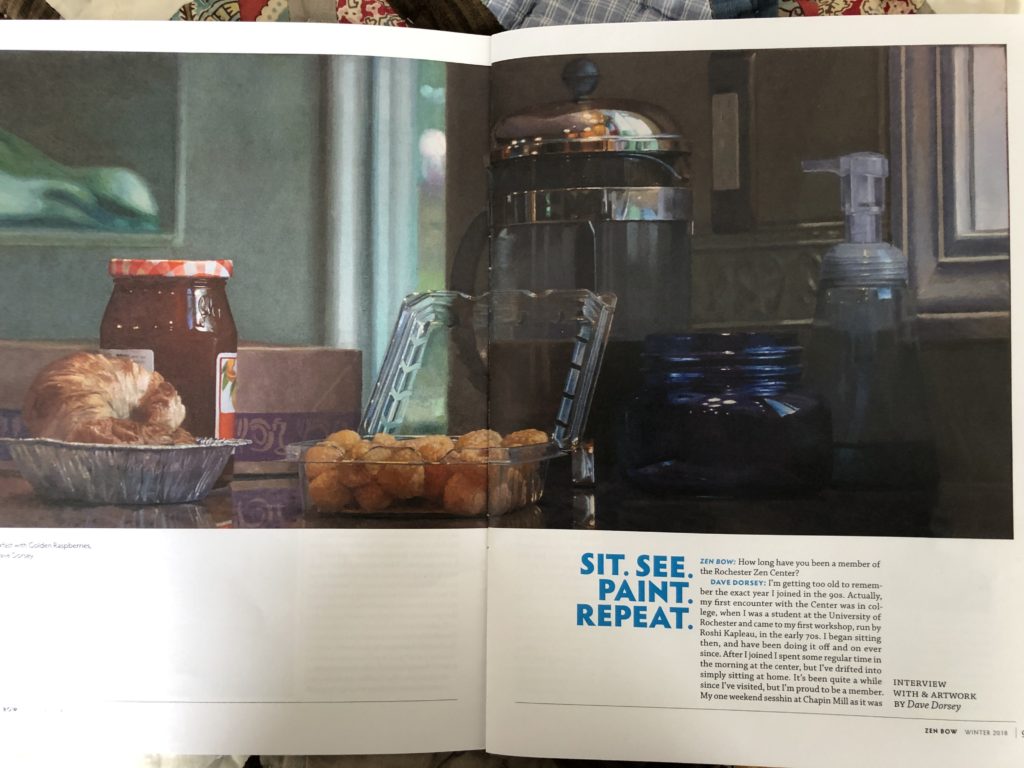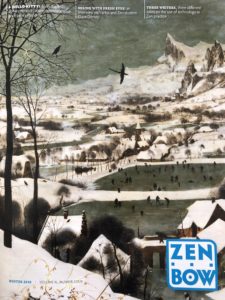Skulls and jars and unmethodical doubt
 I had a recent email conversation with Chris Pulleyn, an old friend, a former employer, and a central figure at the Rochester Zen Center, where I’ve been a member mostly in absentia for a couple decades. She asked me a few questions about the relationship between my still nascent meditation practice and my painting–so that she could publish some of my work and our conversation in the Center’s publication, Zen Bow. It was a wonderful gesture on the part of the people at the Center, and much appreciated. One thing that was fun about the conversation was that she had a hard time seeing common ground between the few paintings of skulls I’ve done—which struck her as very Buddhist, being emblems of mortality and impermanence—alongside my candy jars. It forced me to think about how much meditation has governed not only the energy I bring to painting, but also influenced my understanding about how painting works. What follows is a condensation of the Q/A in Zen Bow.
I had a recent email conversation with Chris Pulleyn, an old friend, a former employer, and a central figure at the Rochester Zen Center, where I’ve been a member mostly in absentia for a couple decades. She asked me a few questions about the relationship between my still nascent meditation practice and my painting–so that she could publish some of my work and our conversation in the Center’s publication, Zen Bow. It was a wonderful gesture on the part of the people at the Center, and much appreciated. One thing that was fun about the conversation was that she had a hard time seeing common ground between the few paintings of skulls I’ve done—which struck her as very Buddhist, being emblems of mortality and impermanence—alongside my candy jars. It forced me to think about how much meditation has governed not only the energy I bring to painting, but also influenced my understanding about how painting works. What follows is a condensation of the Q/A in Zen Bow.
 My first encounter with Zen was in college, when I was a student at the University of Rochester. With a friend from my dorm, I attended my first workshop, run by Philip Kapleau, the center’s founder, in the early 70s. I began sitting then, and have been doing it off and on ever since—constantly trying to establish a daily habit. After I joined as an actual member in the 90s, I spent some regular time in the morning at the center but I’ve drifted into simply sitting at home. It was more than taking up something like yoga. It was, for lack of a better word, a philosophical pursuit.
My first encounter with Zen was in college, when I was a student at the University of Rochester. With a friend from my dorm, I attended my first workshop, run by Philip Kapleau, the center’s founder, in the early 70s. I began sitting then, and have been doing it off and on ever since—constantly trying to establish a daily habit. After I joined as an actual member in the 90s, I spent some regular time in the morning at the center but I’ve drifted into simply sitting at home. It was more than taking up something like yoga. It was, for lack of a better word, a philosophical pursuit.
I came out of high school with a kind of corrosive sense of doubt: a tenacious questioning about the possibility of meaning that seemed urgent but unanswerable. The nature of this doubt is hard to describe without muddling it up, but it was difficult and life-changing and psychologically “totalizing,” to use a word I hear in other contexts now. After contending with this state of unrest for a couple years, as a freshman at UR, I finally got around to reading J.D. Salinger’s Glass family stories, which introduced me to a variety of spiritual traditions: Vedanta, Zen, Russian Orthodox Christianity. His fiction offered me an intersection of references to a variety of spiritual paths. I was so impressed by Salinger, in addition to my curriculum in English lit, I made out a reading list of Salinger’s favorite authors and read them, one after another, as if he had introduced me personally to each of the writers themselves and said, “you two should get to know each other.” Tolstoy, Dostoevsky, Proust, Henry James, Keats, Coleridge, and so on, (some of whom I’ve been going back to reread now after all this time.) As a result, I spent the summer after my freshman year at UR reading all of Proust and most of Kierkegaard. Kierkegaard was crucial—my parents were Presbyterian for a while in my teens, and I still consider myself a Christian who uses Tolstoy and Kierkegaard both as an excuse not to go to join a church, but a few of Kierkegaard insights were very close to the paradoxes one faces in Zen practice when trying to break through how the mind entraps itself without realizing it. (I think the conscious, egocentric mind is itself often a sort of self-sustaining trap.) In addition, I made a list of references to spiritual disciplines and other writers mentioned in Franny and Zooey: Ramakrishnma, Mei MORE